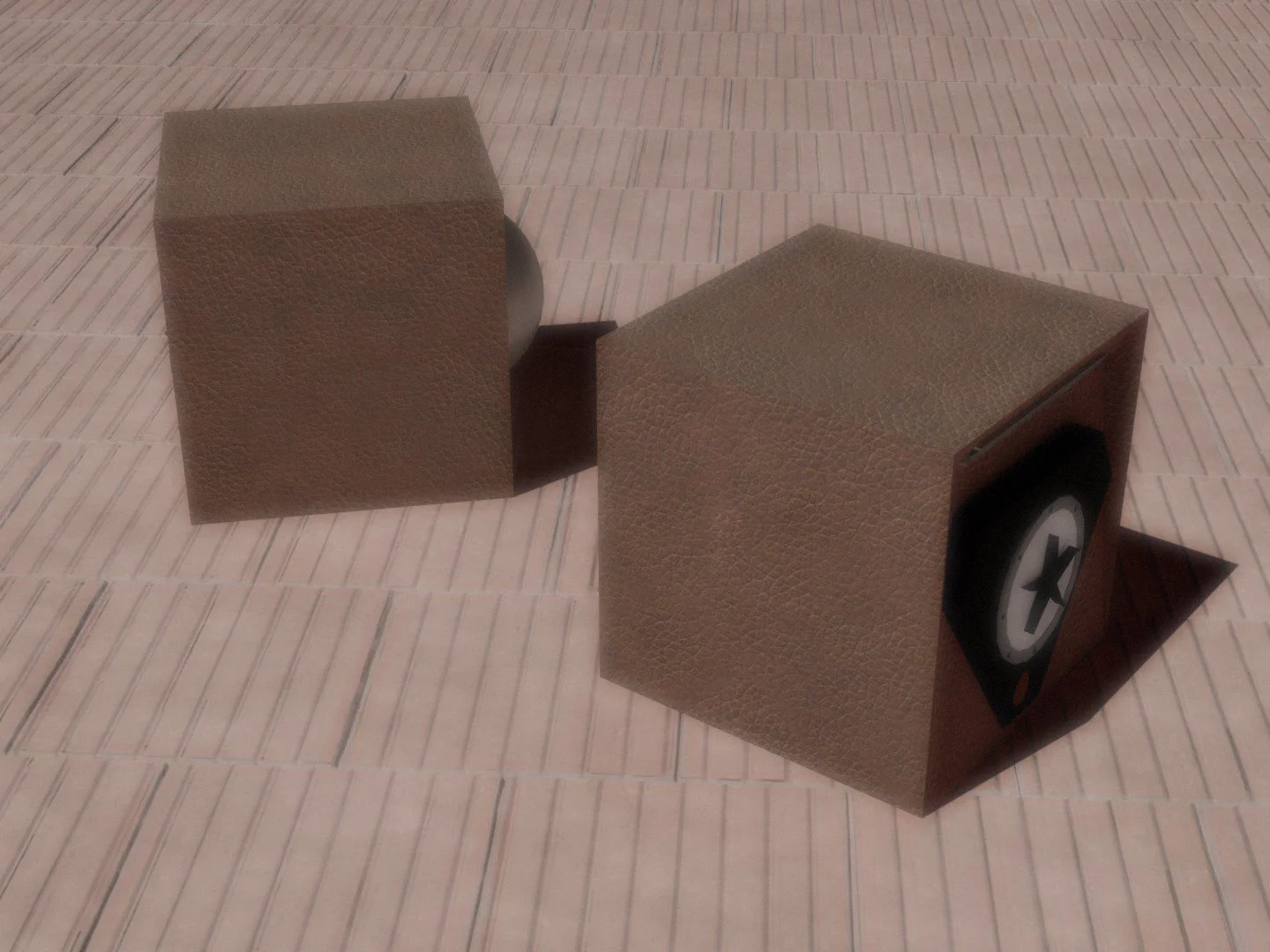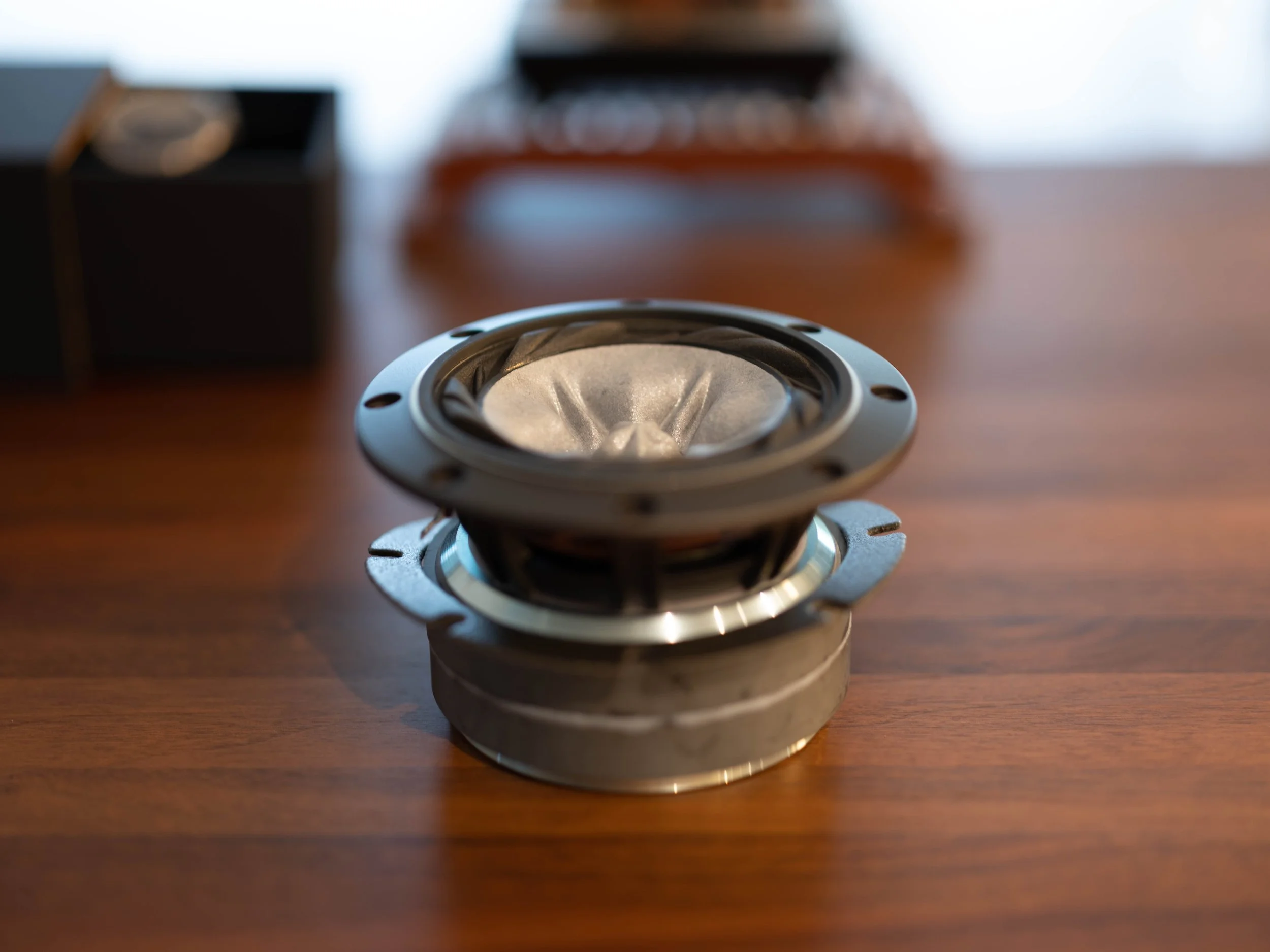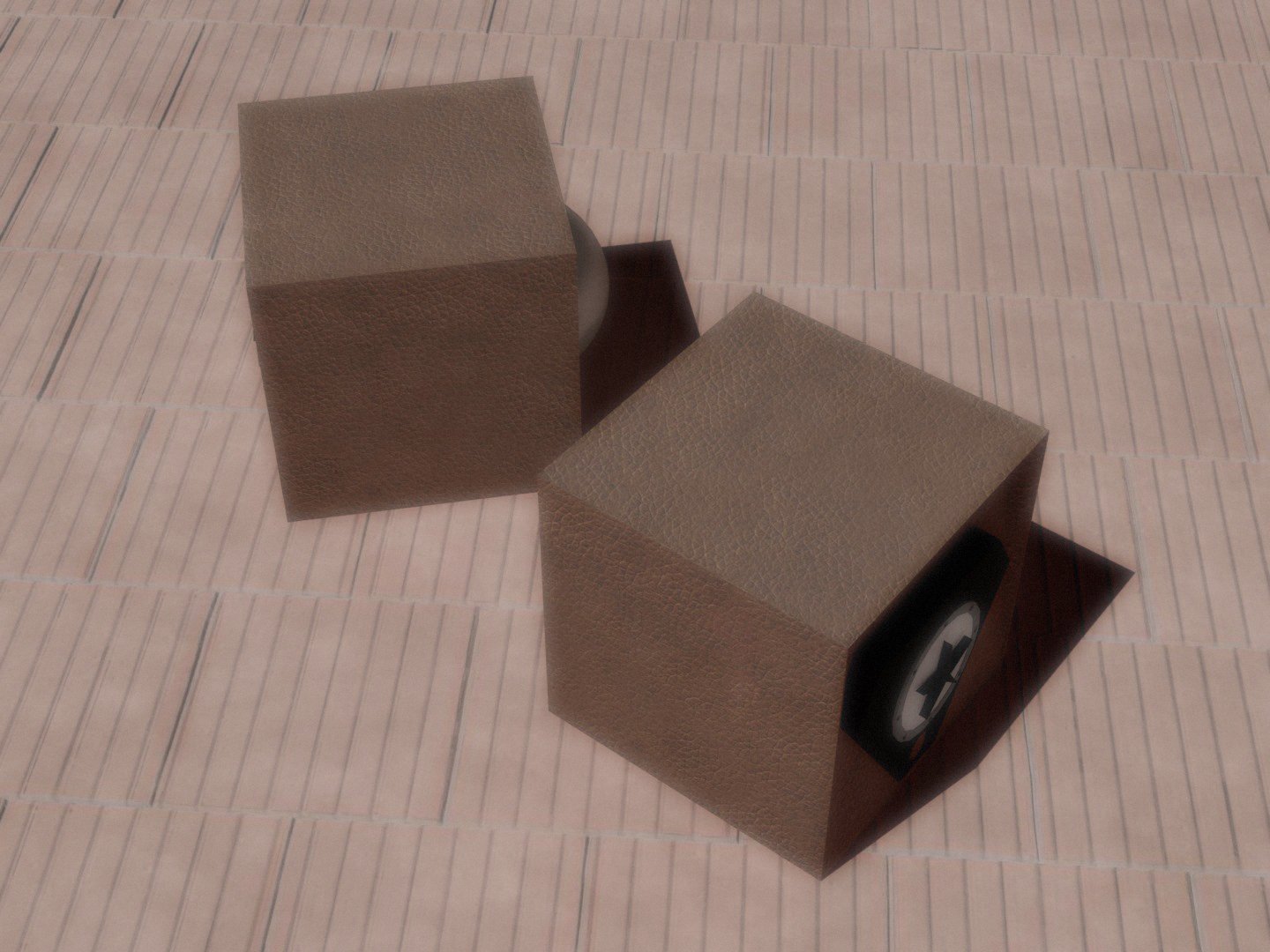ECHOGRAPH
THE BOOKSHELF LOUDSPEAKER made of grade 2 titanium
In cooperation with Filip Pražák
HOUSING AND MATERIALIZATION: Reflex / vented front, titanium (unalloyed titanium, grade 2) for the cube and stainless steel for the resonance semi-hollow sphere (both inside lined with viscoelastic AMPACK IDIKELL M4001/05 heavy foil, 10 kg/m2) with leather cover (Fine Scottish Leather) and contrast stitching, diffraction / diffraction felt in tetrahedral geometry around the speaker chassis
CHASSIS: Full range driver 10.20 cm / 4.02 inches; copper coils; magnet type ferrites; cellulose fiber coated high pressure cone, net weight 1830 g
BINDING POST: Cardas CPBP KAE single black anodized aluminum knob binding post
MEASUREMENTS: 88 dB @ 1 watt @ 1 meter @ 1 kHz; Nominal impedance 8 ohms / minimum 7.3 ohms @ 450 Hz
DIMENSION AND WEIGHT: Height 290 mm; Width 290 mm; Depth 290 / 340 mm; System weight per channel 11 kg
MANUFACTURE: Housing: Goldau-Switzerland, Liberec-Czech Republic, Frauenfeld-Switzerland | Copper parts: Muotathal-Switzerland | Upholstery work: Liberec-Czech Republic | Loudspeaker chassis: Northampton-UK, Akishima-Japan | Inductors: Fredensborg-Denmark | Capacitors: Fredensborg-Denmark | Resistors: Fredensborg-Denmark | Cables: Saco-USA, Altdorf-Switzerland | Speaker terminals: Bandon-USA | Assembly: Zürich-Switzerland, Brunnen-Switzerland
The ECHOGRAPH is a synthesis of fine art, ship building, and above all cutting edge mathematical science with a balance of form and proportion that is derived from golden ratio, prime numbers and Fibonacci sequence geometry: the natural laws of physics and mathematics at the heart of its design.
Product language: these geometric elements form the loudspeaker; a hexahedron with six congruent squares (cube), which has a semi-hollow sphere at the back and an inclined baffle at the front. A full range chassis is installed in the baffle.
The ECHOGRAPH was not so much shaped by the knowledge of the loudspeaker “le petit” presented in 1984, but rather by the thinking of Jean Hiraga.
The “le petit” was a loudspeaker design approach with a relatively small full range speaker in a rather too large speaker cabinet. However, it is undeniably a solution that demonstrates the will to make a loudspeaker of musicality more financially accessible to a wide range of people.
The ECHOGRAPH takes up the design approach of that time, but reflects today's reality and is the solution resulting from the search for a reasonable compromise, the importance of tonal balance, which necessitates the curtailment of the limited bass response, a necessary adjustment in the treble for spectral balance.
Measurement data takes a back seat with the ECHOGRAPH. This loudspeaker should be able to function in a wide field with amplifiers that are not very load-stable and still achieve the “musical sound”.
The interplay of factors such as timbre reproduction, dynamic capabilities and well-controlled directivity are achieved through the selection of the special full-range driver and the materialization of the elaborately constructed cabinet. The latter is realized with a supporting structure made of titanium (for the cube) and stainless steel (for the resonance semi-hollow sphere), an inner lining made of heavy foil and outer absorption made of leather.
Project under development, launch 2025
Our skilled artisans use time honored techniques that have been handed down through generations to produce something that modern engineering and mass production simply cannot replicate. There are very few metal worker in the world today who produce work of this quality and detail.






